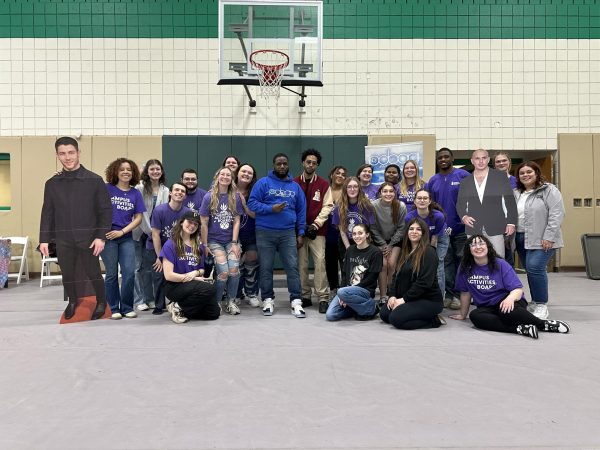Pittsburgh Symphony Orchestra targets broader audience

The symphony was formerly known for wealthy couples wearing fur coats, sitting in velveteen seats and gilded theaters—the magic that makes the symphony, the symphony.
Today, the event of going to see the symphony seems inaccessible to many people, but the Pittsburgh Symphony Orchestra (PSO) is doing everything in its power to change that.
“[We are working to connect with] folks that really haven’t had the orchestra as part of their considered set,” said Andy Coleman, Communications Manager of the PSO. “There’s kind of this persona or this air of ‘super rich and fancy and have to wear a tuxedo.’ We try to really break down that wall and that’s what things like the FUSE concert series really do.”
Coleman, 32, is an alum of Point Park. He says that one of the symphony’s biggest goals is to get rid of the idea that the symphony is only accessible to the wealthy or prominent members of society. The PSO is striving to make the symphony an experience that people from different backgrounds and lifestyles can enjoy.
Through unique concert series, special programming and community outreach the PSO is actively working to make the symphony accessible to a wider range of people, including families and young adults.
One of the PSO’s larger efforts is the FUSE concert series. Steve Hackman, 35, works as the creative director of the series. It is composed of three shows in which classical repertoire is combined with more contemporary music.
“FUSE draws from modern musical techniques and implements contemporary and popular repertoire, leveraging those techniques that would be familiar with people and introducing them to classical composers,” Hackman says.
The series officially began in October with its first show — Beethoven v. Coldplay. The next shows will be Copland + Bon Iver and Stravinsky Remixed in January and March respectively.
Hackman has previously worked with the Indianapolis Symphony as well as at the Colorado Music Festival.
“[The show is] an innovative new approach to classical music presentations through re-contextualizing classical repertoire using techniques like mash-ups, remixes,” Hackman said. “[The series] is introducing symphony to a new generation.”
Although the FUSE series is generating a lot of interest, it is not the only way the PSO is reaching out to new audiences. The PSO is also known for their popular programming, referred to as their POPS series.
The POPS series, which has been ongoing for over 25 years, is the place for the symphony’s non-classical programming.
Rachel Howard, 32, the director of popular programming at the PSO, works to create unique events for people who haven’t explored the idea of the symphony before.
“We are trying to reach audiences who wouldn’t typically subscribe to our POPS season by scheduling special concerts throughout the year,” Howard said. “The movies with live music and video game music shows are really popular now and hit that hard to reach audience of 20-40 year olds.”
The POPS series includes unique concerts such as Pokémon Symphonic Evolutions on Jan. 24 and The Music of Star Wars: Episodes I-VI on Dec. 18. These are just two examples of events that Howard hopes will to draw a fresh audience to the PSO.
“I always ask [people who have never been to the symphony] about their interests – is it movies, specific music genres or groups, video games? Chances are, we have a program that is somehow connected to their other interests,” Howard said. “Even if it’s not their ‘thing’ and it doesn’t become a regular outing for them, they will not be disappointed.”
For more information about the FUSE and POPS series, the PSO and tickets purchases, visit http://www.pittsburghsymphony.org/.





